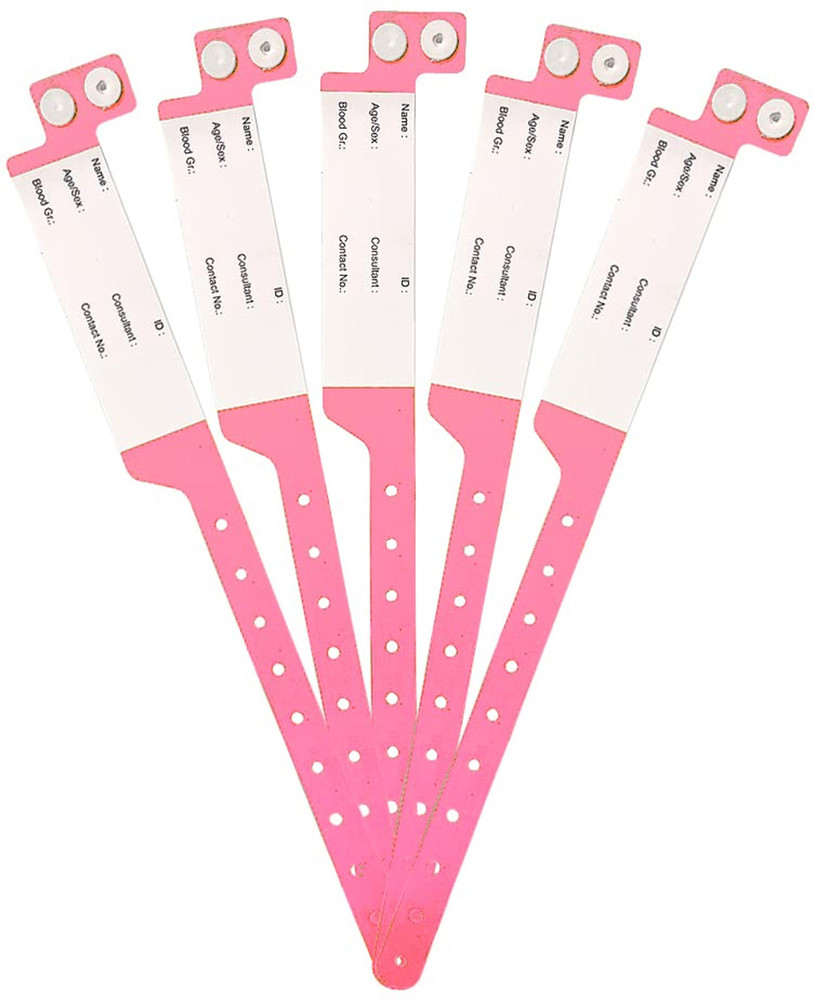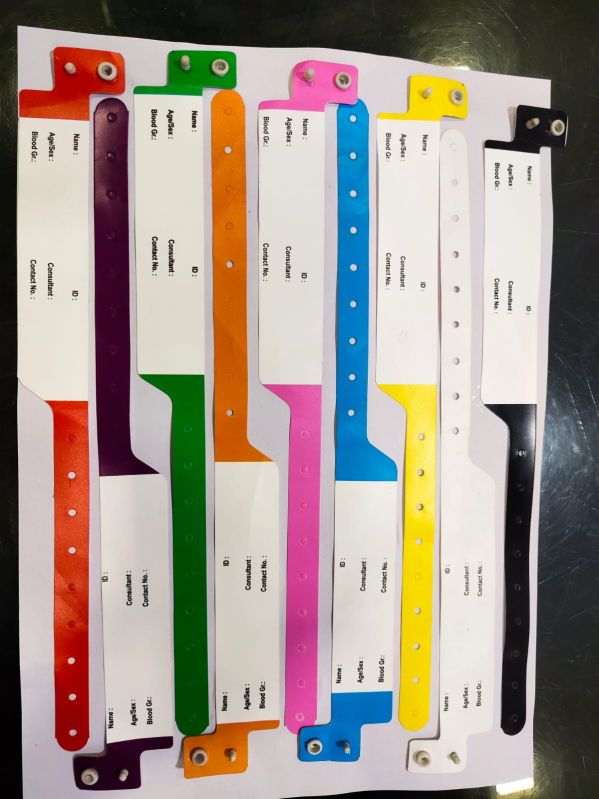The Growing Need for Advanced Patient Identification Bands in Modern Healthcare Facilities
The Growing Need for Advanced Patient Identification Bands in Modern Healthcare Facilities
Blog Article
Discovering the Different Kinds of Patient Identification Band Used in Medical Facilities
In the elaborate world of healthcare, the critical function of Patient Identification bands typically goes undetected. These bands, differing from easy paper wristbands to sophisticated RFID bands, develop the backbone of Patient security methods, guaranteeing accuracy in Patient Identification.
Recognizing the Value of Patient Identification Bands
While they might appear like simple devices, Patient Identification bands play an essential role in clinical facilities. These bands offer as a vital tool for verifying Patient identity, preventing medical mistakes related to misidentification. Patient Identification bands likewise help in streamlining administrative tasks, guaranteeing exact record-keeping and invoicing.
Typical Paper Wristbands: Their Use and Limitations
Typical paper wristbands have actually been a staple in Patient Identification across different medical facilities. While their use prevails, they nurture specific constraints that may influence their efficiency in Patient monitoring. This section will concentrate on the scope of their application and the intrinsic downsides associated with their usage.
Paper Wristbands: Use Range
In the realm of Patient Identification, paper wristbands have long held a vital role. These bands are usually utilized in outpatient setups, where the Patient's remain is temporary. Regardless of developments in innovation, the modest paper wristband continues to be a dependable and cost-efficient remedy for Patient Identification in various medical care circumstances.
Limitations of Paper Wristbands
Despite their extensive use, paper wristbands are not without their disadvantages. In enhancement, paper wristbands frequently do not have the technical abilities of more contemporary choices, such as barcoding or RFID chips, restricting their capability to simply displaying created details. Paper wristbands can trigger discomfort or skin irritation to some individuals, especially when used for extended periods.
Barcoded Wristbands: Innovations in Patient Identification
While Patient Identification has long been an important aspect of healthcare, the introduction of barcoded wristbands represents a significant leap onward. These bands utilize the simpleness of barcoding technology, allowing for Patient details to be quickly checked and accessed. They improve the speed and precision of Patient Identification, reducing the risk of clinical mistakes connected to misidentification.
Superhigh Frequency Identification (RFID) Bands: a Step Towards Futuristic Medical Care
The evolution of Patient Identification bands has actually caused the emergence of Radio Frequency Identification (RFID) Bands (patient identification band). These cutting-edge gadgets present crucial benefits for health care centers, using a more reliable and technologically progressed means of Patient Identification. The execution of RFID in health care is a significant action in the direction of a much more advanced technique to Patient administration and security
Comprehending RFID Bands

RFID Bands: Secret Advantages
Welcoming a future where modern technology and medical care merge, superhigh frequency Identification bands supply a number of crucial benefits. Largely, these bands enhance Patient security by providing precise, instantaneous Identification, thereby minimizing medical important link errors. RFID bands can save a substantial amount of Patient information, including case history and allergic reactions, allowing customized care. They likewise enhance administrative tasks, as the automated data entry changes hand-operated processes, boosting effectiveness and decreasing documentation. Additionally, RFID bands provide real-time monitoring of individuals, vital in risky environments such as surgical treatment or intensive care. Finally, these bands are immune and sturdy to environmental aspects, making sure regular go to my blog capability. In general, RFID bands represent a significant development in Patient Identification technology, benefiting both individuals and health care carriers.
Implementing RFID in Medical Care
As we enter a technically sophisticated age, the application of RFID bands in medical care ends up being increasingly important. These bands offer a seamless way to track and recognize clients, guaranteeing their safety and enhancing effectiveness in therapy procedures. RFID bands offer countless benefits over traditional Identification methods. They can store a large quantity of data, including the Patient's medical background and therapy strategies, which can be conveniently accessed by doctor. This data assists medical professionals make notified decisions relating to the Patient's therapy plan. Additionally, RFID bands decrease medical errors by providing exact Patient Identification, which is crucial in stopping misdiagnosis or incorrect medicine administration. Hence, the application of RFID bands is a considerable action in the direction of improving Patient safety and health care distribution.

Color-Coded Wristbands: Aiding in Quick and Accurate Medical Diagnosis
In the bustling setting of a medical facility, color-coded wristbands have emerged as crucial tools for swift and specific Identification of an individual's medical problem. These wristbands, worn by patients, bring details shades that match to different medical problems or statuses. This system is made to why not find out more use instant aesthetic hints to healthcare carriers, improving Patient safety and care top quality.
Methods for Reliable Application and Administration of Patient ID Bands
Attaining ideal usage of Patient Identification bands requires a well-structured approach for their application and monitoring. Patient education is also vital; clients must understand the objective of the bands and the requirement for their constant wear. It's crucial to have a back-up strategy in location, such as barcode scanning or biometrics, to make certain that Patient Identification is never ever compromised.
Verdict
Patient Identification bands are crucial in medical centers to guarantee safety and precision. Traditional paper, barcoded, RFID, and color-coded wristbands each hold unique advantages, ranging from cost-effectiveness to advanced information storage space and instant clinical informs. Efficient implementation and administration of these bands can considerably decrease medical mistakes, increase effectiveness, and improve general Patient treatment. Thus, understanding and utilizing these Identification devices is vital for preserving high standards in health care.
These bands, differing from simple paper wristbands to sophisticated RFID bands, create the foundation of Patient security protocols, ensuring accuracy in Patient Identification.The development of Patient Identification bands has brought regarding the appearance of Radio Regularity Identification (RFID) Bands. In general, RFID bands represent a substantial development in Patient Identification technology, benefiting both individuals and health care carriers.
RFID bands decrease medical mistakes by offering accurate Patient Identification, which is critical in preventing misdiagnosis or incorrect medication administration. Patient education is likewise crucial; clients should recognize the objective of the bands and the need for their constant wear.
Report this page